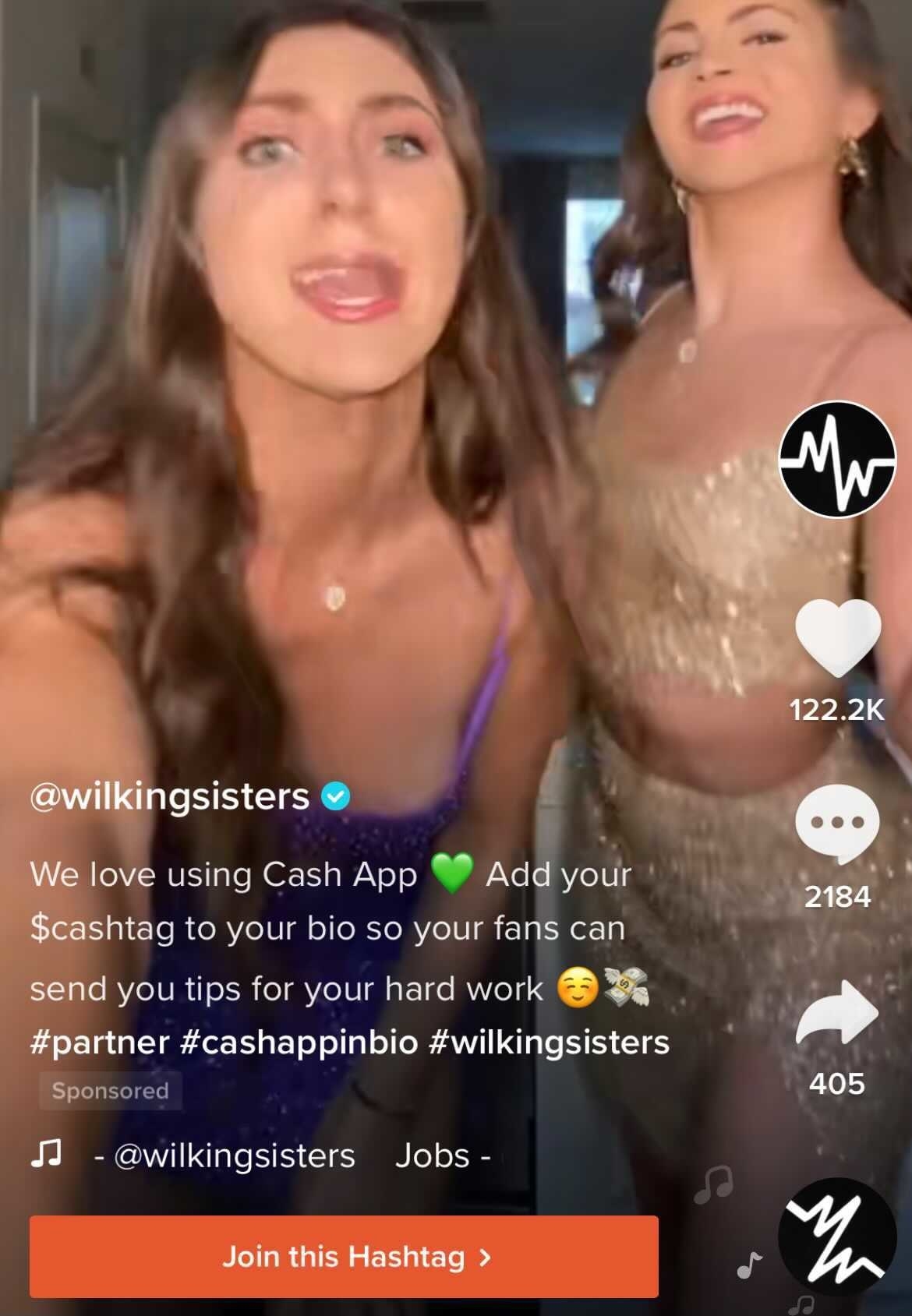This is an excerpt from Please Like Me, BuzzFeed News’ newsletter about how influencers are battling for your attention. You can sign up here.
Is this legit?
Last week, health coach and influencer Nikki Sharp decided that she wanted to give back. So she posted on her Instagram stories and asked her more than 340,000 followers if they needed assistance buying food or paying bills during the holiday season.
The response, she said, was bigger than she ever could have imagined. She told me her posts were shared by other influencers, and she began to get a ton of responses from followers offering to donate money or goods and services. She was inundated with messages from people pouring their hearts out about their struggles, asking if she could help pay their bills.
So she decided to set her sights higher. After paying about $7,000 worth of bills for strangers, she said, she opened a GoFundMe so others could donate to the cause.
“My hope is that this GoFundMe can raise another $10,000 to donate! If you are able to donate, even if it's just $10, all the money raised here will be going to my community members in need,” she wrote in the fundraiser’s description.
Nikki’s idea to use her platform to solicit donations is not new. I have noticed this trend growing over the past couple of years, especially around the holidays. Influencers want to use their platform for good, and soliciting direct donations is a pretty easy way to do it. Many followers trust the influencer and have little qualms about trusting them with a donation. It can be a fun way for followers to give back as well because they get to watch the results of their gift in action in a way they wouldn’t by donating to a bigger charity.
This week, Denver-based influencer Jessi Jean asked her followers to send donations via Venmo to surprise a server with a big tip. Jessi told me she decided to do the fundraiser after seeing another influencer do it, although, she said, she was nervous because she wasn’t sure how people would react.
Jessi was able to collect nearly $3,000, telling me donations ranged from as little as $1 to larger amounts (she and her husband also contributed). She took a video of herself giving her server a $1,500 tip, and then split the rest among the waitstaff. It has been viewed more than 35,000 times. Jessi said the response from her community has been overwhelmingly positive, saying the recipients were “incredibly touched” by it and the followers loved they could give back in such an easy way.
Of course, as this type of charitable giving grows more popular online, so does the scrutiny. If you send money to an individual on Venmo, there are no safeguards in place to ensure it will end up in the right hands — as there is in a traditional charity.
I decided to ask Kevin Scally from Charity Navigator, a nonprofit watchdog that evaluates and scrutinizes charities across the US, about these fundraisers. He told me that while he thinks the intention behind them is “commendable,” sending money to a person rather than a registered charitable organization “directly comes with risk.”
“With personal fundraisers, there's limited accountability as to where the money donated goes,” he said. “Donors have to take the fundraiser at their word on how the money will benefit the cause directly.”
Nikki told me she is doing her best to verify the donations by vetting each recipient and asking for things like copies of bills to confirm the amounts. She also said she isn’t paying things like student loans or credit card debt, focusing more on hospital or electricity bills. She also has been sharing with her followers information on where the funds are going.
As far as the GoFundMe goes, a spokesperson for the platform told me that it also has safeguards in place, known as “the GoFundMe Guarantee,” to ensure the money that individuals collect on behalf of others actually ends up being used for its intended purpose. If questions arise, they said, the money is held until it’s verified that it’s going to the right place.
Still, Kevin says the safest way to confirm your charitable donation is being used properly is to give it to a vetted and established organization that has to report its receipts to the IRS.
“We recommend that donors donate directly to a trustworthy nonprofit with proven impact or look for a fundraiser that is coordinated with the nonprofit,” he said.
So, as these fundraisers continue to proliferate throughout the holiday season, I’d advise any followers to go in with open eyes about the risks you are taking if you want to donate. And, of course, if you are going to donate to an influencer, why not also send a donation to a nonprofit doing great work?
—Stephanie McNeal
I can no longer tell when I’m watching sponcon on TikTok — and it’s both impressive and distressing
Brands are getting very good at TikTok.
I pride myself on being able to discern very quickly if a video on my For You page is an ad. For one, the tone almost always gives it away. A typical ad reads like an Instagram spon come to life (i.e., “Hey guys, life has been really hectic picking up after my kiddos. That’s why I love [select cleaning product]”). Within seconds, I’ll know I’m watching an ad and keep it scrolling. (The next TikTok will be a storytime about how a woman discovered that a man who she thought had ghosted her was actually arrested for first-degree murder. You see what I mean?)
Over the last week, however, there have been a handful of times I found myself watching a TikTok only to discover at the end that it was an ad. Brands now know people are skipping their features, and they’re getting wiser.
Take this sponsored TikTok from Grubhub. The company hired two creators known on the app for doing stunt requests. The two guys respond to a comment asking them to “order Grubhub from inside the restaurant.” These kinds of videos are fairly common on the platform, so I kept watching. You don’t learn until the end that it’s a full-on commercial when the company flashes a message: “Download the app and save.”
They dunnit: I watched it all the way through. Grubhub just paid already successful content creators to create content they would have normally made, and slapped its logo on it. Of course there are obvious context clues if you’re hyperalert, like instead of a username, it’s labeled “Sponsored Content” — but most of us are casually watching.
Some spon labels are trickier to spot than others. There are a few ad formats on the app: The Grubhub video is an example of a “commercial” spot that gets placed in between organic TikTok videos. Then there are many official brand accounts that create their own content that the app can then boost onto people’s For You page.
For example, Oreo has been creating its own original TikToks that rely on the app to be ~discovered~ over being permanently placed in people’s feeds. Those posts usually come with a teeny-tiny, opaque “sponsored” label at the end of the caption and a swarm of hashtags.

I’m sure it comes down to different pricing models, but the effect is the same. TikTok and brands who pay it want to make sure you’re actually viewing the content as close to its entirety as possible. And because it’s so easy and attractive to scroll through the app, it and individual brands have had to get crafty with both the content and how it’s presented.
Oreo recently riffed on the “two pretty best friends” meme by including a Chips Ahoy cookie in its branded content. It was cute and funny. And it got over 8.4 million views! Which performed way better than most native content about that meme.
I reached out to Oreo and Grubhub to learn more about their marketing.
It’s impressive. Brands are trying to speak as directly and authentically as possible to a new generation of consumers on social media. But on social media, it’s becoming harder and harder to discern ads from native content. I get that’s their MO, but that’s also an issue for young users. A small “sponsored” label at the very bottom of a video is doing the bare minimum for transparency. On TV, commercial placements are very obvious. Even on YouTube and Instagram, there was a huge uphill battle to get the platforms and their top creators to be very upfront and obvious about what they’re shilling or who’s paying them to make brand mentions. On TikTok, the line between advertisements and native content is getting blurred — intentionally.
The app doesn’t want to, but I think it should make the label for sponsored posts bigger and move it up top. For commercial slots, look, kudos to companies who’ve hacked it and are just paying experienced TikTokers to make commercials for them — but being outsmarted to watch an entire ad unknowingly is an experience I truly, truly resent.
To that, I guess, cheers to the cheesy Instagram ads and spon. Thanks for keeping capitalism obvious.
Until next time,
Tanya

